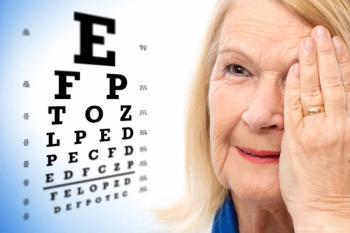
Anti-VEGF Therapy for Retinal Disease
Drawbacks and challenges associated with the administration of anti-VEGF injections currently available to treat retinal diseases.
Episodes in this series

Albert J. Augustin, MD: We’ll now move forward and speak briefly about anti-VEGF therapy in general. Dr Peto, can you briefly discuss how anti-VEGF drugs have become the mainstay of therapy for so many retinal diseases? What’s the mechanism of action, and why are those drugs so successful?
Tunde Peto, MD, PhD: These drugs have become very successful because they give the patients hope. We can tell them for the first time that their vision is likely to improve, or at least be stabilized, and there’s only a very small chance that they’ll get much worse and a chance that they’ll get slowly worse if the drug doesn’t work in their eyes. The patients really respond to this, although most times they’re very afraid of the first injections.
In terms of regimens, we try to start the injections on the same day if we can. There’s nothing worse than for them to go home, google or watch a movie, and try to first show we’re going to put the injection in. The patients are very responsive to this care that they receive. We’ve been disadvantaged in the diabetes field by having to prioritize the patients with AMD [age-related macular degeneration] at the beginning of the pandemic, because AMD takes the vision away much quicker than diabetic macular edema. When we had limited footfall, the patients with AMD were injected as a priority. But we know that patients with diabetes need to be treated as well so they’re back on track.
Because we go into the eye, the endophthalmitis is always a risk. It might be different in different units depending on how this physical setup is. We do find that nurses in our units are very good injectors. They usually take very good care of the patient. They have their lists, they get to know these patients who come back, and they’re very good at managing patients with anxiety as well. For us, the nurse injectors—and in some units optometrists and orthoptist injectors—have been a real answer to the question, because we don’t have enough ophthalmologists practically anywhere in the world to deliver this many injections. Of course, ophthalmologists are a lot of the times better used for doing the actual operations or delivering more complicated injections, such as the subretinal injections for gene therapy.
Albert J. Augustin, MD: Thank you very much. It’s unique for the United Kingdom and your country [Northern Ireland] for the nurses to be doing the injections. This is not the case in our country. It’s also not the case in France, as far as I know. Dr Korobelnik, there are some more drawbacks. Monthly injections are not the way to go for the next 10 years or so, and the increasing risk of infection with so many injections also exists. In addition to this, we have a big burden to the patient and to the caregivers, especially in working-age people, such as patients with diabetes. Can you give a few words on this as well?
Jean-Franҫois Korobelnik, MD: You’re absolutely right. The burden of those diseases is really high because the patients require frequent visits for control and examination, for injections, and to control their disease. For some patients, we may expand the interval between the injections, and it can become somehow comfortable. Some other patients require extremely frequent injections, and they may require injections in both eyes because quite often in wet AMD and DME [diabetic macular edema] the disease is bilateral. The burden is high for the patients, for their families, and the cost also is quite high because you need to pay for everything: the procedure, the drug, transportation, many things. This will vary a lot from 1 country to another, but it’s adding to the time spent by the patient and their family to come attend the appointments. The burden is very high at the moment, and it’s also a problem for us because we have to cope with all those patients, the ones we’re following and the new ones. As people are living longer, diabetes is becoming more common. We have many more new cases of advanced AMD and diabetic retinopathy. Not only is the burden high for the patients to come, but the pressure is high on us to organize our clinics to deal with all those patients.
Transcript edited for clarity.
Newsletter
Keep your retina practice on the forefront—subscribe for expert analysis and emerging trends in retinal disease management.

















































